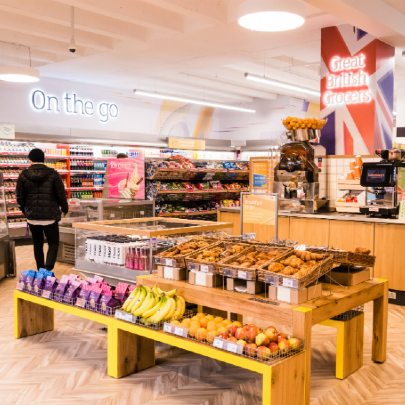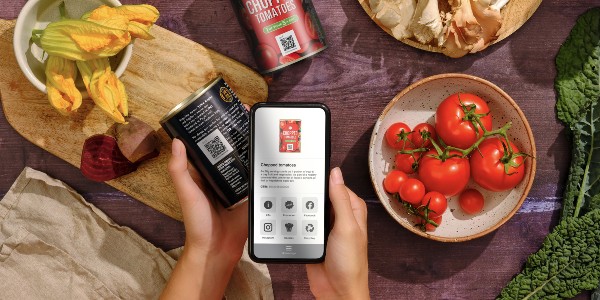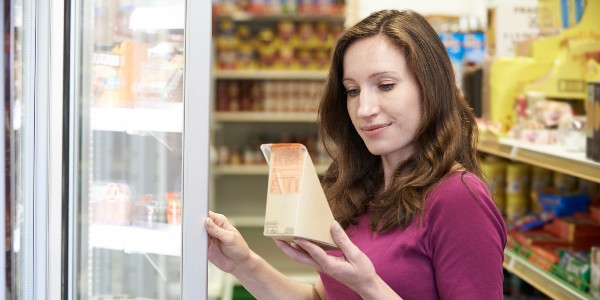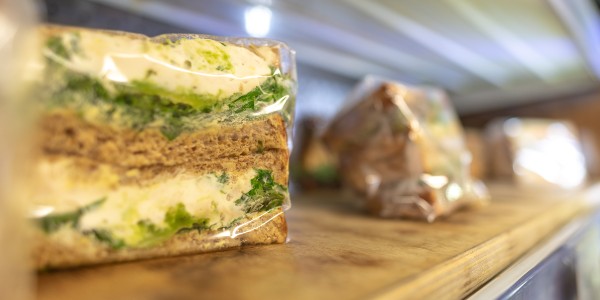August 16, 2023 Industry news
For most product-based startups, seeing your products sitting on the shelves of the country’s leading retailers is the ultimate goal; the dream to aspire to, the moment you realise you have finally made it.
Securing a retail listing is a major milestone on the journey of any food and drink business. It is one of the greatest endorsements a brand and get and can bring huge opportunities for growth. With a great product and the right approach, making it onto the shelf can dramatically boost brand awareness and see your sales and profits soar.
Getting there however can be a tough slog and may feel overwhelming at first. Approaching buyers, convincing them that your product is commercially viable and building a relationship can be a tricky process, especially for challenger brands that lack the experience and resources of the larger suppliers they are competing against.
Many retailers understand this and are keen to ensure they give challenger brands a chance to shine. These brands bring innovation and disrupt the market, allowing retailers to surprise and delight their consumers with new products and experiences. That is why a number of the UK’s leading supermarkets have launched incubator and accelerator programmes to help them succeed.
Buyer insights
To find out more, we recently attended an insightful panel discussion featuring Tom Forsythe, head of future brands at Sainsbury’s.

An experienced buyer and commercial strategist, Tom has been with Sainsbury’s for nearly a decade so knows the business inside and out. For the past two years Tom has worked on, and now heads up, the Sainsbury’s future brands programme.
Initially the brainchild of a buying team that wanted to capitalise on consumer appetite for different and authentic products, the programme launched in 2018 and has since gone from strength to strength.
As Tom explained, it was set up specifically to support and accelerate how challenger brands can land in a Sainsbury’s store.
Sections of their stores nationwide have allocated special aisles to stock produce, ROI, brand awareness and sales have sky-rocketed for some of the more successful brands, and there is constant chatter on social media about popular products.
If their products prove to be a hit, brands can also receive support with scaling into other retailers so it can be a really important launch pad on their journey.
The cost of living
With high inflation and the cost-of-living crisis impacting consumer habits and behaviours, Tom says that cost and pricing have never been more relevant. What this means from a challenger brand context is that value, or the perception of value, is becoming increasingly important and is now top of mind for both buyers and consumers alike.
By default, challenger brands will trade up. They tend to produce premium products so need to drive up their average sale price (ASP). Tom says that this can actually be a good thing because, from a buyer’s perspective, having trade up brands is essential for balancing the books. They need to bring in products at the top end of the value equation to fund price investment and remain value competitive.
He believes that in some ways, the cost-of-living crisis actually represents and opportunity for challenger brands. When you think about share of wallet, many people are eating out far less. As a result, a greater share is being spent in supermarkets by consumers looking for something special in the way of an indulgent substitute that can fill that gap at home.
Defining value
Tom encouraged challenger brands not to think of value purely in terms of price. While there are lots of like-for-like products that can be compared across lots of different retailers, innovative products from challenger brands often cannot be compared. A unique or unusual proposition can surprise, delight and inspire consumers who are used to seeing the same Unilever, Kraft Heinz or Mondelez products in practically every store they enter.
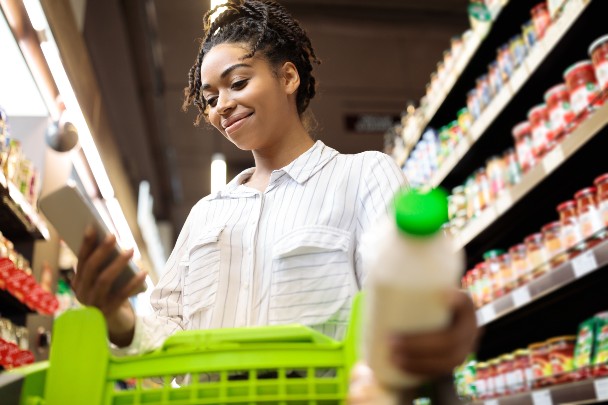
Having a point of difference presents a real opportunity for convincing customers to trade up and try something new.
One crucial point to remember is that entering the crowded food and drink market is rarely easy. As the term implies, challenger brands are coming in to challenge a huge supplier base and FMCG behemoths that have enormous marketing budgets. Tom says founders need to face into the fact that it can be difficult, but programmes such as Sainsbury’s Future Brands exist exactly for this reason – to give emerging brands a platform to stand out, get in front of customer and communicate value.
What is the programme looking for and what does it offer?
Tom and his team want to find brands that can serve a particular purpose within their fixtures. Sainsbury’s usually ask brands to sign a twelve-month agreement that precludes them from selling with other major retailers but, in return, they get a really compelling package of support to help them drive cut through on-shelf and at the point of sale.
Everyone who joins the future brands programme benefits from an internal growth partner; an account manager that sits with the Future Brands team. These partners work directly with each brand, are responsible for managing their interactions with buyers and will help them develop a growth plan.
The programme also provides support in secondary spaces, whether that be through marketing, in store sampling, offers or promotions. Online is a very different challenge and the Future Brands is currently heavily focused on in-store formats.
How can brands get noticed by the future brands team?
According to Tom, his team are always looking for brands that are doing something different. They want to see product lines that demonstrate innovation, particularly any innovation related to diversity and inclusion, health or sustainability.
He says that brand identity and product innovation are at the very heart of the programme. When hearing from prospective new suppliers, his team want to understand how and why they would bring something new to Sainsbury’s customers.
Communicating that point of difference is essential. The key term the team use internally is ‘incrementality.’ Buyers need to identify what is going to be incremental to their customers as well as the store’s profit and loss. To do this they will typically assess a supplier’s…

- Brand – what is the brand purpose, vision or mission? Does it come across clearly? Is it impactful and can it be easily communicated to customers?
- Team – what stage of the journey is the brand on? Have they got a team in place and could they work together to really hit the ground running and accelerate. Future Brands was originally more of an incubator scheme, but it has gradually evolved into an accelerator programme.
- Commercial delivery – going back to the point of incrementality, commercial delivery is essential. Buyers need to have some confidence that the brands they bring in can commercially deliver for Sainsbury’s.
Top tips for dealing with buyers
Tom concluded by sharing some essential tips for any brands looking to join the programme:
- Remember that getting listed is the ‘easy’ bit: up until that point you don’t really have anything to lose. Make sure you go in with a plan and are ready to do everything you can to convert customers and drive sales. A robust plan for driving sales is not only important for driving growth, it will also help you convince buyers that your products can deliver commercially.
- Tailor your approach: different retailers will be looking for different things so tailor your approach accordingly. Equally, once you get on to the shelf, you will need to make sure you are appealing to the demographic or audience you want to target. Go in with a plan for how you are going to activate once in store. Online will be very different so make sure you think about that too.
- Patience is a virtue: the challenger brand mentality requires you to always push for results. Retailers tend to move much slower and cannot always keep up with brands’ hunger for success. Engage with your buyer and hear them out. If they say now is not the right time, come back in six months. Listen to them. Don’t be too demanding and recognise there are limits on how quickly retailers can move. Focus on building a healthy, happy relationship.
Stay hungry
Tom’s final point was that while patience is important, emerging brands should never lose their challenger mentality.
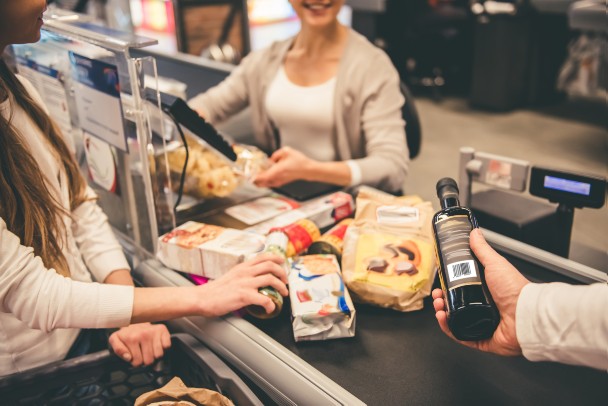
You need to be tenacious and do everything you can to find the right point of contact on the buying team. An endorsement or referral from someone that might know a member of Future Brands team will always be more impactful than a cold email. Getting the right introduction is the tricky bit. Tom recommends leveraging communities and networks such as Bread & Jam to find out who the right people are.
Once you have identified that person, make sure your pitch is compelling. You need to demonstrate that all important point of difference so look at your category and what is currently on offer. Ask yourself “is it ripe for disruption?” and, if so, how will your brand do that?
